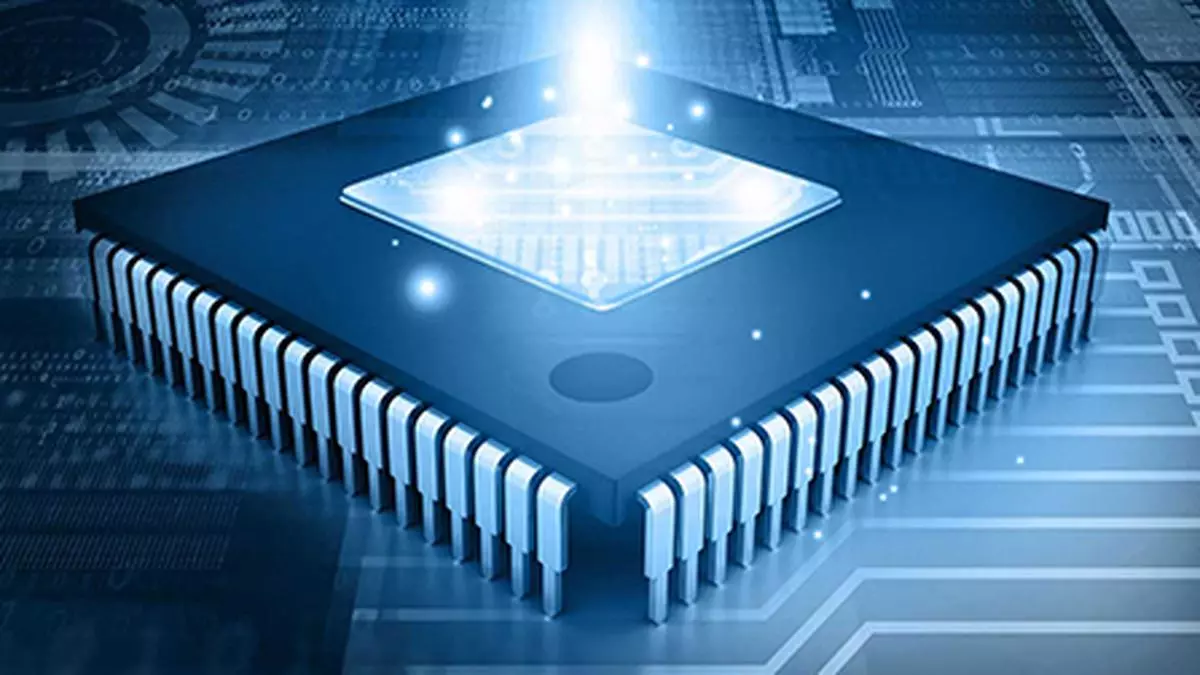Does seem to be India a Global Destination for Waste Semiconductor?
The manufacturing of semiconductors produces a lot of waste both liquid and solid and air pollution.

Introduction
Maintaining sustainability in mind is becoming more and more important as the rush to establish new semiconductor manufacturing facilities is at an all-time high internationally. The manufacturing of semiconductors produces a lot of waste—both liquid and solid—and air pollution. The transportation of many of the production-related materials to the manufacturing facility (FAB/ATMP) increases the carbon footprint of the whole semiconductor manufacturing value chain.
Millions of gallons of water are consumed each day during semiconductor production, and there are significant electricity needs. Hazardous waste is produced during the semiconductor manufacturing process, which also produces pollutants from the use of very poisonous chemicals and gases.
The value chain’s numerous semiconductor manufacturers and suppliers have embraced efforts and programs like increasing the effectiveness of and reusing power and water; conducting chemical, gas, and mineral research for greener materials; utilizing renewable energy sources; reducing electricity usage; recycling; and handling hazardous waste.
Despite all of these efforts, the sustainability policies of international semiconductor makers are coming under increasing criticism. Sustainability in the value chain of semiconductor fabrication is still a problem that has to be addressed. Additionally, there is a rise in both consumer awareness of and demand for electronics made with environmentally and socially conscious production practices.
A few days ago, 5.9 million metric tonnes of lithium (Li) deposits were identified in Jammu and Kashmir, according to international news sources. To put this in context, India is the world’s sixth-largest producer of lithium, according to the discovery. One of the essential elements used in electric batteries is lithium, sometimes referred to as the “white gold of energy storage technology.” In addition to electric vehicles, lithium-based semiconductors are essential for research in nuclear medicine, national security, and other fields of science.
Similar to other supply chain sectors, China now has a dominant position in the production of lithium batteries, accounting for around 40% of the global supply. It is also more likely that a situation similar to the semiconductor crisis will occur in the future decade as a result of the likely emergence of a lithium shortage.
Although it is important to remember that this finding was made 26 years ago, the Geographical Survey of India (GSI) published a study in which it identified significant lithium resources in the same region. Sadly, not much has been done in the way of follow-up since the report’s publication. Cut to the present: the “new” find, like the earlier ones, is still under examination, indicating that it just represents an estimate of the mineral’s abundance based on geographic evidence and does not necessarily portend the viability of mining operations in the region.
The environmental effects of lithium mining are another factor raising doubts about its practicality. According to research by Friends of the Earth (FoE), the mining of lithium would unavoidably cause soil degradation and air pollution. Given that it takes 2.2 million liters of water to create one tonne of lithium, communities near where the extraction takes place will suffer as a result of the rising demand for lithium.
With an investment of RS.76,000 crores ($10 billion USD), the Indian government has established a comprehensive program for the growth of the semiconductor and display manufacturing ecosystem in India. The program includes several initiatives to draw capital to the semiconductor and display manufacturing industries. This includes financial support for the establishment of semiconductor fabs in India in the amount of 50% of the project cost on a pari-passu basis. To advance long-term initiatives for creating a sustainable semiconductor and display ecosystem, the government has also established the India Semiconductor Mission.
In response to the incentives and initiatives announced by the Government of India, several local and international businesses have shown a desire to establish fabrics and packaging units. Although this is positive for the Indian economy and industry, and it supports India’s goal of becoming a “Semiconductor Nation,” it is crucial that semiconductor production place a significant emphasis on sustainability and ESG.
The adoption of new technologies in the semiconductor manufacturing process and innovation throughout the manufacturing value chain will be necessary to reduce the environmental impact of the semiconductor manufacturing process. India may have the chance to adopt sustainable semiconductor manufacturing techniques through innovation in areas such as process innovation, sustainable materials, maximization of the use of resources (power, water), disposal of hazardous waste, recycling, and reuse.
Building ethical supply chains for the semiconductor manufacturing process, developing and implementing environmental safety policies and guidelines specifically for the semiconductor manufacturing sector, offering incentives for R&D and innovation for sustainability in semiconductor manufacturing, and formulating environmental safety policies are some of the other areas that need attention. Regulations apply to the use of obsolete or earlier-generation semiconductor manufacturing techniques and equipment.
Additionally, there is a need to create and nurture a skilled workforce in fields like industry 4.0, recycling and waste management, renewable energy, water management, materials research, and manufacturing process innovation.
It is important to consider both the upstream and downstream of the semiconductor manufacturing process in addition to the direct operating footprint of semiconductor production facilities to address sustainability issues in the semiconductor production value chain. The potential exists for the government, business, and academia to advance sustainability innovation and establish India as a global leader in the production of sustainable semiconductors.![]()
In India, the US “dumps” everything.
The crucial question of who is responsible for environmental accountability emerges as states build their semiconductor facilities or contract manufacturing to “friendly” nations. It won’t come as a surprise if the phrase “fastest expanding economy” comes to mean being a place where semiconductor garbage is dumped, just so the West can perceive India as a viable option for its “China + 1″ plan. As internationally developed nations aim to increase their semiconductor output, this is what happened with e-waste and is very likely to happen again with semiconductor trash.
According to study from 2021 that was published in Sustainability, most of the waste from the electronics industry—which may be imported from developed nations—is accumulating in India, and the lack of sufficient control is just making that situation worse. Only 10% of the world’s e-waste production is now recycled in affluent countries, according to data from the United Nations Environmental Programme (UNEP) cited in their report, with the other 90% being sent to undeveloped countries worldwide.
Consider the Minerals Security Partnership (MSP), a group of 11 nations under the leadership of the United States that aims to secure the supply chain of vital minerals. India was left out of the agreement due to a lack of industry knowledge in India. Since then, both the government and media outlets have highlighted the overwhelming sense of exclusion. Because of the failure to gain access, the government was forced to enter the mining industry through diplomatic channels.
Additionally, media outlets have been working hard to promote the nation as a valuable supplier of essential minerals. For instance, several recent assessments describe India as a “rich source of rare earth,” containing roughly 6% of global reserves but only using 1% of them. These papers urged mining changes so that these minerals might be extracted by the commercial sector. A greater US-Indian partnership has also been emphasized by some as a potential means of securing India a place at the table.
The United States has shown that they are aware of India’s potential contribution by highlighting rare earth processing technology as a potential area for future cooperation in their recent statement, even though the issue of India’s inclusion in the Minerals Security Partnership (MSP) is still open.
The semiconductor industry has a carbon issue.
However, a greater issue is approaching. There is an issue with carbon emissions throughout the semiconductor business as a whole, not only with lithium. The tiny silicon chips that run everything, including solar panels, electric cars, and our smartphones, are also huge energy and water consumes . We’re talking about pigs that use a lot of water and generate toxic garbage.
In reality, according to a 2020 Harvard University study, the production of chips “accounts for the majority of the carbon emissions” from hardware systems. According to the study, GlobalFoundries, Intel, and TSMC produce more than half of the operating carbon emissions, mostly as a result of perfluorocarbons (PFCs), chemicals, and gases.
Another consideration in the shift of semiconductor production from the United States to China fifty years ago was the environmental impact of chip fabrication. Rare earth elements (REEs), such as neodymium, yttrium, and terbium, which are essential components of cellphones, wind turbines, and electric cars, were formerly the main product of the US. The manufacturing was relocated to China because of environmental concerns over the disposal of radioactive waste, where restrictions were more lenient.
Conclusion
India appears to be moving in two separate ways at the moment. In order to show its commitment to halting climate change, it is one thing to aspire to lower emission intensity by 45% by 2030. However, it is aggressively working to establish itself as a significant player in the global semiconductor industry, which usually employs energy-intensive manufacturing methods and might lead to greater emissions. The apparent conflict between India’s climate aims and its economic ambitions highlights the need for India to strike a balance between sustainable development and industrial growth.
edited and proofread by nikita sharma




